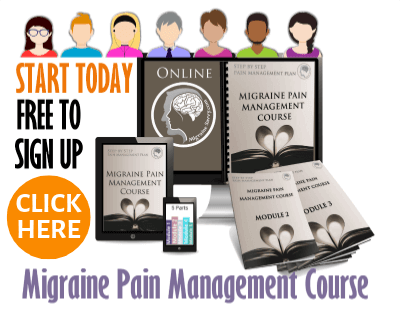- Home
- Migraine Symptoms
- Complicated Migraine Symptoms
Magnesium Deficient = More Migraine Attacks
Science confirms this hidden trigger.
Get all 7 forms your body actually absorbs in one bottle.
🎁Save 10% with my code!
Magnesium Deficient = More Migraine Attacks
Science confirms this hidden trigger. Get all 7 forms your body actually absorbs in one bottle +
🎁Save 10% with my code!
Complicated Migraine Symptoms Explained: Key Insights and When to Seek Help
Complicated migraine is a specific type of migraine that can be particularly challenging to identify and manage. These complicated migraine symptoms can mimic serious conditions such as strokes, aneurysms, or neurological disorders, making them difficult for both doctors and patients to diagnose accurately.
Here you'll find an in-depth overview of complicated migraine symptoms, migraine types that fall into this category, and practical tips to manage them effectively.
Why Recognizing Complicated Migraine Symptoms is Important
Symptoms of complicated migraines are often severe and may appear suddenly. Because they can resemble life-threatening conditions, understanding what makes complicated migraines unique can help you seek the right care and manage symptoms proactively. Let’s explore the symptoms, types, and strategies to recognize and cope with complicated migraines.
Symptoms and Warning Signs of Complicated Migraines
Migraines are often more than just a headache - they can impact multiple aspects of your health. Symptoms vary greatly and can appear before, during, or even after a migraine’s pain phase. The following symptoms are common with complicated migraines:
- Severe, throbbing pain, typically on one side of the head.
- Visual disturbances such as flashes of light, zigzag lines, or temporary blindness.
- Nausea and vomiting
- Sensitivity to light, sound, or smells
- Difficulty speaking or forming words
If any of these symptoms appear suddenly or seem different from your usual migraine pattern, it’s crucial to seek medical advice to rule out other serious conditions.
Your family can also help you notice warning signs of an impending migraine.
Things like insomnia, food cravings, unexplained mood swings, or temper tantrums and irritability. They can let you know when they see the shift even if you don't.
If you experience unexplained anger before an attack, reading Taboo Symptoms of Migraine: Anger might help you recognize it as a warning sign and start treating it as a symptom too.

Types of Complicated Migraines and Their Unique Symptoms
1. Hemiplegic Migraine
Hemiplegic migraines are a rare form of migraine where one side of the body becomes weak, much like the symptoms of a stroke. A family history of this migraine type is common.
Symptoms include:
- Weakness on one side of your body, including your face, arm, and or leg.
- Numbness or tingling in the affected side.
- Visual disturbances such as flashes of light or double vision (aura).
- Difficulty speaking or forming words.
- Drowsiness, dizziness, or loss of coordination. [1]
Symptoms can last a few hours or even days, with potential for temporary memory loss that might persist longer. The memory loss with this type of migraine can sometimes continue for months. [1]
2. Basilar Migraine
Basilar migraine, also known as basilar artery migraine, impacts the brainstem and can cause severe symptoms that may or may not include head pain. This type is known for intense dizziness and balance issues. Fainting can be common. You might experience both nausea and vomiting which makes your episode very disabling. [2]
With basilar artery migraines, you may have any combination of the following symptoms:
- Nausea and vomiting
- Sensitivity to light and sound
- Cold hands or feet
- Double vision or temporary blindness
- Loss of balance, dizziness, fainting, or confusion
- Hearing impairments or body tingling
- Slurred speech
Each symptom can last between 5 to 60 minutes, sometimes occurring in succession. Basilar migraines are among the more debilitating types, often requiring immediate symptom management. [2]
My #1 Choice in Magnesium Supplementation
3. Ophthalmoplegic Migraine
Ophthalmoplegic migraine, also known as ocular migraine, focuses primarily on eye-related symptoms and are extremely rare.
Symptoms include:
- Severe eye pain or headache centered around the eye.
- Drooping eyelid and pupil changes.
- Eye movement issues and temporary vision changes. [3]
This migraine type is accompanied by temporary eye muscle weakness or paralysis, which may persist for days to weeks after resolution of the headache. For example, during the attack your eyelid will droop, and you can't move your eye from one side to the other (which can be very alarming). The entire episode is typically very brief and is normally accompanied by intense eye pain.
The first occurrence of ophthalmoplegic migraine typically takes place during childhood and intermittent attacks may persist into adulthood. [3]
4. Retinal Migraine
Retinal migraines are another rare form of migraine that impacts vision, sometimes causing sudden vision loss in one eye. This form may include a headache and typically lasts about an hour.
Symptoms include:
- Temporary or partial vision loss in one eye
- Headache centered near the affected eye
You'd experience "repeated bouts of short–lasting, diminished vision or blindness in one eye. These bouts of diminished vision or blindness may precede or accompany a headache and nausea." [4]
If you experience vision changes only in one eye, consult a healthcare provider to determine if it’s related to a retinal migraine or another eye condition.
5. Hypnic Headache
Hypnic headaches are rare, often striking at night and affecting those over 50. This type is sometimes called the "alarm clock" headache because it occurs at the same time every night, waking sufferers up.
Symptoms include:
- Unilateral or bilateral pain (one or both sides of the head)
- Throbbing pain lasting 15-60 minutes, sometimes longer (like 6 hours, but not everyone experiences this)
- Commonly occurs between 1 a.m. and 3 a.m.
Typical migraine medications may be ineffective, but caffeine is sometimes recommended as a treatment.

When to Seek Immediate Medical Attention
Complicated migraines can produce symptoms similar to a stroke or aneurysm. Here’s how to recognize when you need to see a doctor immediately:
Emergency Symptoms: If you experience any of the following, go to the emergency room or consult your doctor:
- Sudden numbness, weakness, or tingling on one side of your body.
- Paralysis of the face, arm, or leg on one side.
- Sudden vision changes, including blindness or double vision.
- Difficulty forming or understanding words.
These symptoms can be similar to stroke symptoms and require prompt medical evaluation.
 Emergency Warning Symptoms to Know
Emergency Warning Symptoms to KnowPractical Tips for Managing Complicated Migraine Symptoms
If you’ve been diagnosed with complicated migraines, there are practical ways to manage and alleviate symptoms when they arise:
- Medication at the Onset: Work with your doctor to find the right preventive medications or treatments to take as soon as symptoms begin.
- Cold and Heat Therapy: Use ice packs on your neck or a cold/hot sinus mask to alleviate pain.
- Practice Relaxation Techniques: Listening to soothing music, meditating, or practicing breathing exercises can help lower stress levels and manage pain.
- Get Support from Family: Involve family members by educating them about warning signs, such as sudden mood shifts or irritability, to help you identify early symptoms.
>> Pro Tip: Keeping a migraine diary can help track symptoms, identify triggers, and refine your treatment approach with your healthcare provider.
Immediate Relief Suggestions:
Frequently Asked Questions (FAQs)
Just click on the little arrow for the answer to appear.
What makes complicated migraines different from regular migraines?
What makes complicated migraines different from regular migraines?
Answer: Complicated migraines can mimic severe medical issues like strokes and often involve unusual symptoms such as one-sided paralysis or vision loss. Regular migraines don’t typically present these symptoms.
Can complicated migraines be dangerous?
Can complicated migraines be dangerous?
Answer: Yes, some symptoms, especially those that resemble stroke or neurological issues, can be serious. Complicated migraines are not life-threatening on their own, but the symptoms can mask other medical emergencies, so it’s essential to seek evaluation if symptoms change.
How is a complicated migraine diagnosed?
How is a complicated migraine diagnosed?
Answer: A complicated migraine diagnosis typically involves ruling out other conditions (brain tumor, aneurysm), often with imaging tests like MRIs or CT scans. Neurologists may conduct exams and consider family history as well.
What are the main types of complicated migraines?
What are the main types of complicated migraines?
Answer: The main types include hemiplegic, basilar, ophthalmoplegic, retinal, and hypnic migraines. Each has unique symptoms that can impact vision, motor skills, or balance.
Additional Resources for Complicated Migraines
If you’re dealing with complicated migraines, consider checking out the following resources for more support:
- Migraine-Specific Journals and Support Groups: Online communities can provide valuable support and tips.
- My Book Migraine Management: How to Reduce Anxiety, Manage Pain, and Prevent Attacks offers practical steps for managing migraines and building awareness of early warning signals.
- Helpful Apps: Some migraine apps help track symptoms, medication, and mood, giving you valuable insights to discuss with your healthcare provider.
Recognizing and managing complicated migraine symptoms can be challenging, especially since these symptoms often mimic other serious conditions. By familiarizing yourself with different types of migraine symptoms, involving loved ones in recognizing your own early warning signs, and building a personalized management strategy, you can improve your quality of life and take control of your migraine experience.
If you experience symptoms out of the ordinary, don’t hesitate to consult with a medical professional. Remember, proactive steps can help manage these complex symptoms effectively.
WANT MORE TIPS? Subscribe to my newsletter and follow along on Facebook and Pinterest for all of the latest updates.
MIGRAINE SYMPTOMS Related Articles
How to be more MIGRAINE SAVVY right now...
Complicated Migraine Symptoms References:
1. Watson, S. (2024) What Is Hemiplegic Migraine? Available [online] at: https://www.healthline.com/health/migraine/hemiplegic-migraine#symptoms
2. WebMD (2024) Rare Migraine Types. Available [online] at: https://www.webmd.com/migraines-headaches/rare-types-migraine
3. St. John, T. MD (2017) Ophthalmoplegic Migraine Symptoms. Available [online] at: https://www.livestrong.com/article/123412-ophthalmoplegic-migraine-symptoms/
4. Duggal, N. (2021) What is a Retinal Migraine? Available [online] at: https://www.healthline.com/health/migraine/retinal-migraines
5. The Migraine Trust (2024) What is Hypnic Headache? Available [online] at: https://www.migrainetrust.org/about-migraine/types-of-migraine/other-headache-disorders/hypnic-headache/
Original post 2010, Updated Nov. 5, 2024



















